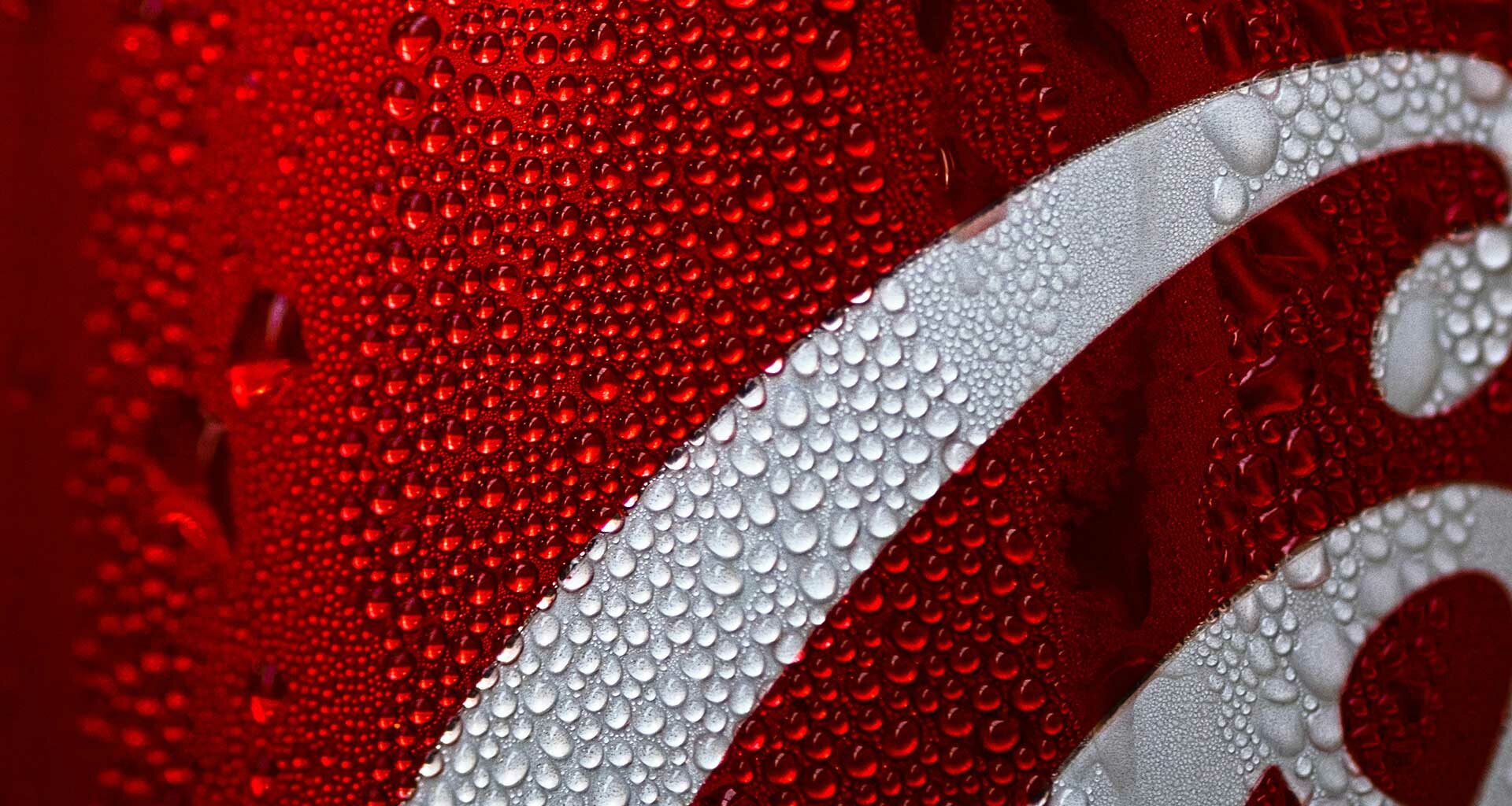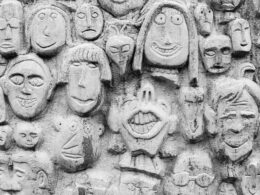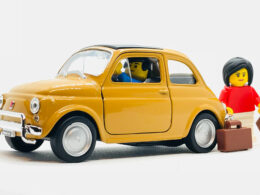Be a real brand. Defend your heritage. Build your brand values. Create emotionally engaging advertising to reinforce brand differentiation, consumer gratification, and customer loyalty. You know, brand stuff.
Somewhere in the climate-controlled Brand Keys storage unit in Northern New Jersey is a cardboard box packed with last-century, ¾ inch recording cassettes.
I’m not sure the technology even exists any more to view ¾ inch recording cassettes, but if it did, you’d be able to see a Coke commercial we overlaid with a Pepsi commercial’s audio track. That or a Pepsi commercial overlaid with a Coke audio track. I don’t remember which and it doesn’t matter very much. The audios and visuals sync up perfectly and the story each cola purported to tell was exactly the same. Both were ads for cola and were completely undifferentiated! Not a scintilla, not a skoosh. Neither provided any reason to choose one cola over the other. Overlaying one to the other did not improve things.
Which was the point of the exercise. To show there was no difference between the two colas in how they presented themselves to the world. Except for the names, their presentations and positionings were interchangeable. Brands aren’t supposed to be that way. Brands are supposed to stand for something. And if you’re thinking something about having different tastes, I’ll get to that in a bit.
OK, short sidebar. Recently we released our Commodity-to-Human Brand Continuum 2.0. (If you missed it, you can catch it here. One of the points on the continuum is called “Category Placeholder.” That’s a spot reserved for products and services that used to bebrands but aren’t anymore. Stuff with strong awareness, but devoid of anything other than occupying a space in a category. Both Coke and Pepsi both live there. Which is kind of a shame. Coke was once described as the “sublimated essence of all America stands for.” But that’s back when it still was a “brand” and not, as it is now, a “Category Placeholder.”
Anyway, in the early 1980’s, when Pepsi and Coke were still “brands,” competition between the two escalated. It turned into “The Cola Wars.” Sure, there was always a battle for share-of-market, but at the time Coke was losing. To add insult to market share, Pepsi upped the ante with a campaign called the “Pepsi Challenge.” That’s where Pepsi conducted blind taste tests and most cola drinkers generally, and Coke drinkers specifically, thought Pepsi tasted better! Coca-Cola’s felt it had to do something, and it did.
The backlash was stellar.
No, not by coming up with some amazing positioning. Nor by creating amazingly engaging advertising. What they did – wait for it – was to replace their signature soda with a sweeter version they thought would match Pepsi, and all would be right with the world! (FYI, the only notable change to Coke’s “secret” formula, created in 1886, prior to that was in 1903 when they removed cocaine as an ingredient.) So yeah, changing Coke’s formula was a big deal! It was a big, but also problematic. For three critical reasons:
1) Coca-Cola didn’t know how to measure what the Ideal taste was. The only thing for certain was consumers liked Pepsi’s sweeter taste.
2) The taste tests didn’t measure how consumers drank soda in real life. They measured how consumers drank soda in taste tests. And consumers did like Pepsi’s sweeter taste. But only in small samples. Yeah, you got it. The sizes used in taste tests.
3) Taste tests are all well and good (see #2), but even zealots couldn’t really tell the difference between Coke and Pepsi. They thought they could. They said they could. But they couldn’t. As the extraordinarily well-publicized taste test challenge results proved, Coke loyalists “preferred” Pepsi.
In actuality, those loyalists had bought into the brand (See our Commodity-to-Human Brand Continuum 2.0 link in paragraph two), which is what branding is supposed to do. So, with the kind of boundless optimism and enthusiasm which earned the Donner Party their place in history, on April 23, 1985, Coca-Cola introduced its new formula, known as “New Coke.”
The backlash was stellar.
Coke’s consumer hotline lit up with protests. Consumer, retailer, and bottler dissatisfaction was mythological. Consumers dumped New Coke down sewers. Actual sewers! How angry do you have to be to dump a product down a sewer?! Original Coke was hoarded and sold at prices you’d only believe if you looked for Purell at the height of the recent pandemic! New Coke created the kind of market repercussions they write business school case histories about, which in this instance, they did! Coca-Cola’s own website describes the episode as one of the “most memorable marketing blunders ever.” The combination and context of the words “memorable” and “blunder” heretofore reserved for events like the Titanic.
Personally, I would have just changed the formula, made it sweeter, and not said a word. And yeah, evangelists and people who believe such treachery exists in Corporate America would have muttered among themselves and after a week would have gone back to guzzling their cans, bottles, and liters of slightly-sweeter Coke. And all would have been quiet on the Cola Wars front.
BTW, conspiracy theorists did believe New Coke was introduced only to revive the classic version’s fortunes. We don’t believe that. We think Coke didn’t realize what an announced revision to their classic formula would sacrifice. They forgot they weren’t just selling a soft drink. They were selling a brand. With a brand comes an accompanying a set of differentiated, life-style values and articulated meaning that, well, meant something to consumers. It’s not every day consumers pour a product down a sewer. The brand was supposed to bestow upon Coke consumers a sense of emotional engagement and satisfaction. And a frisson of vindication that their choice would distinguish them from their peers à la a soda significantly differentiated from the competition. You know, so they felt they were the chosen consumers with the chosen brand. The operative word being “brand.”
Alas, that did not happen. After what must have felt like a year in Marketing Hell but was only 77 days, on July 10, 1985, New Coke got dumped. This time for real. The previous version of Coke was brought back as “Coca-Cola Classic.” The most accurate post-mortem for New Coke was ironically offered by Roger Enrico, Pepsi-Cola USA’s then-CEO. “They can’t just change the taste of their flagship brand. All they can do is defend the heritage they nearly abandoned in 1985.” Which is what you do. Be a real brand. Defend your heritage. Build your brand values. Create emotionally engaging advertising to reinforce brand differentiation, consumer gratification, and customer loyalty. You know, brand stuff.
Why revisit a 36-year-old marketing debacle? Because Coca-Cola is doing it again! This time changing the formula of another of its most popular diet drinks – Coke Zero. According to the company, the new Coke Zero version will “deliver an even more iconic Coke taste.” And yeah, I don’t know what that means either. Since they apparently had trouble getting an accurate measure of the “Ideal taste” 36 years ago, getting an accurate fix on the “Ideal iconic taste” in the 21st century among more complex consumers who have access to social networking had to have been one doozie of an assignment!
Coca-Cola Zero was introduced in 2005. It’s already been “reformulated.” Nearly five years ago. You probably didn’t notice. Or care. And won’t notice or care about the new, “new” reformulation, either. Because “Category Placeholders” while being well-known, are not known for anything in particular. And sure, new formulations give the marketing folks something to talk about. Granted not much, but something. When you’re a “Category Placeholder” you do what you can to hold up your end when it comes to awareness. For Coke Zero, or the new, new Coke Zero, that might be enough.
As we’re branding folks, we don’t think it’s enough. We think they’d have been better off spending time and effort looking for something other than a flavor re-formulation to offer consumers. You know, making the product actually stand for something in the minds of consumers, other than “it’s a diet soda,” could deliver powerful marketing oomph. Which, you can take from me, is a lot harder to come up with than just changing a formula and is much more rewarding.
Because strategically positioning and managing and marketing a real 21st century brand usually is.
 Robert Passikoff is founder and CEO of Brand Keys. He has received several awards for market research innovation including the prestigious Gold Ogilvy Award and is the author of 3 marketing and branding books including the best-seller, Predicting Market Success. Robert is also a frequent contributor to TheCustomer.
Robert Passikoff is founder and CEO of Brand Keys. He has received several awards for market research innovation including the prestigious Gold Ogilvy Award and is the author of 3 marketing and branding books including the best-seller, Predicting Market Success. Robert is also a frequent contributor to TheCustomer.
Photo by Burak Fatsa on Unsplash.














2 comments